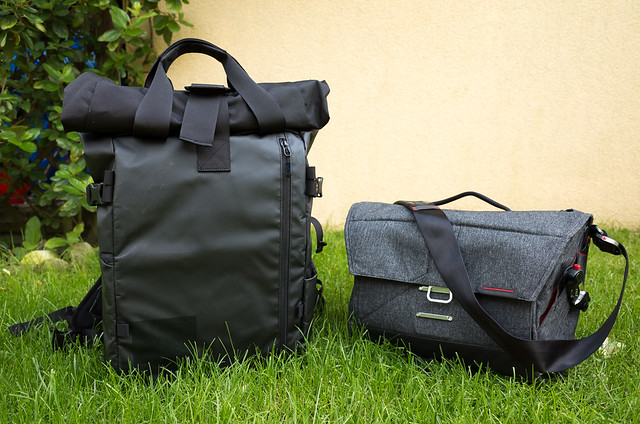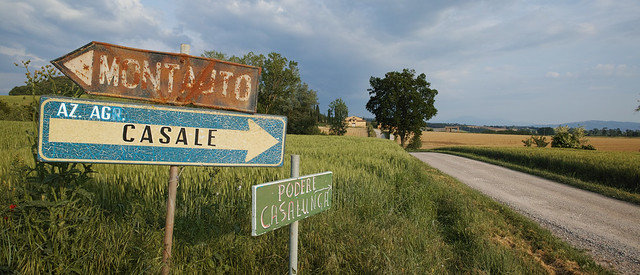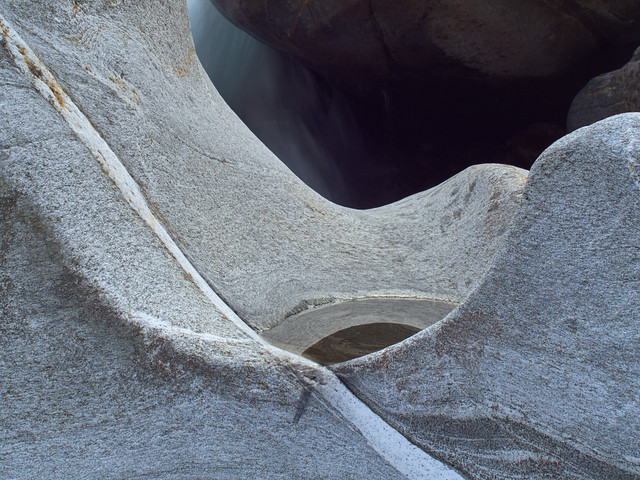A Tale of Two (new) Bags
hipper than thou?
A quick Google search on the phrase “photographers can never have enough bags” astonishingly yields only 56 results. Astonishingly, because I’m sure I see at least one a week on my forays across a pretty limited part of the blogosphere. However, slightly less constrained searches immediately give counts heading into several thousand, so that’s a bit reassuring.
While I certainly have enough bags, none of them ever turn out to be particularly satisfying. I have a need for two, possibly three bags. The first would be an everyday bag which can accommodate both work stuff and a smallish camera (Olympus PEN-size at most), but ideally could instead carry a full “street” kit. The second would be a day hiking backpack, which can carry a workable “landscape” kit, as well as extra clothes, rain jacket, food, etc. Finally, a nice to have but rarely needed third would be a dedicated hiking backpack with full “kitchen sink” capacity. I have no need for trolley bags, Pelican cases, etc.
Starting with the first category, I do own a Domke F803, which is actually great, and I use it a lot - or at least I used to. But it is too small to carry a laptop, so fails the “every day” criteria. But as a small discrete camera satchel, it is unequalled in my opinion. I’ve been through various non-camera messenger bags, but none have really worked or lasted long. And a few years ago I received a gift of the highly lauded ONA Brixton messenger bag: this, for me, is a disaster. Heavy, inflexible, uncomfortable, with front pockets so tight they’re practically useless. And the canvas has weathered horribly in rain, becoming stiff and shiny, unlike the Domke which weathers beautifully with age. Sorry, but ONA is hipster rubbish in my experience.
In category two I’ve never really found much to beat the modest Kata 467. Unfortunately, a nasty little thief in Bogota agreed with me, so I don’t have it any more. And Kata was bought out by Manfrotto, and their evolution of the 467 doesn’t excite me. I bought a LowePro Rover Pro 35L AW a few years back, but it’s just a mess of straps and weird pockets with this removable camera pod thingy which takes up far too much space. I’ve hardly ever used it.
In category three, I have a LowePro ProTrekker 300 AW which is fine, but a little heavy and cumbersome. I tried replacing it with a ThinkTank Airport Commuter, but this was a total disaster: the removable waist strap (a feature looking for a requirement if ever there was one) removed itself in an Argentinian 737 overhead locker, and the removable tripod straps (there’s theme there) did the same thing a few weeks later. Never used it since. So, possibly I do have enough bags - but not the right ones.
Which brings us to these two:
on my left, the $270 WANDRD PRVKE, on my right, the $219 Peak Design Everyday Messenger. Ouch. That’s $489!
This general dissatisfaction with bags, and the apparent inability of mainstream manufacturers to come up with anything really good has left an opportunity in the market. Also, LowePro, Manfrotto, Tamrac et al don’t really seem to have responded to the trend of camera downsizing. Their bags are always quoted as “fitting x DSLRs with x lenses” - sure, that would mean x CSCs with x lenses, but they’d be rattling around in a pointlessly large bag. I’m still not convinced that anyone really caters for this, specifically, but certain smaller manufacturers are trying to offer more focused design, along with less geeky styling, and hipster lifestyle trimmings. For example Peak Design, and WNDRD.
I bought Peak Design’s Everyday Messenger in February, and WNDRD’s PRVKE pack a few weeks back. My reactions so far are a little mixed.
I’ve been using the Peak Design Everyday Messenger almost everyday since I bought it. I take it to work everyday, with at minimum an iPad, sunglasses and a small camera, but sometimes also a 15” laptop, notebook, various accessories, etc. It’s been on various flights, I’ve used it in Hamburg and in Tuscany as a travel camera bag. I’ve carried by hand, over the shoulder, and while cycling. I can sum my feelings for this bag up quite easily: it is by far the best messenger-style bag I’ve ever used, and I can’t see me ever wanting to change. At $220 it isn’t cheap, but it’s worth it. And you could throw in one of their excellent camera straps while you’re at it.
The Everyday Messenger was designed in collaboration with photographer Trey Ratcliffe. His photography doesn’t do much for me personally, but he sure knows how to specify a bag. The bag has got a zillion features, but they’re ALL useful and well thought out. Very unusually for a messenger bag, it is also designed to carry a tripod, and my Gitzo Traveller fits just fine. Other great touches include the quick access zipper on the top, and the dedicated, separate iPad sleeve. It also survives torrential rain quite happily.
On the downside, I will say that it is showing some faint signs of wear, in particular on the excellent, seatbelt material strap, but hopefully it will be long lasting. And there is just a touch of “hipster cool, obligatory beard stuff” about both the company and the bag, but not so much that it goes from background embarrassing to irritatingly contrived. Which brings us to…
...the WANDRD (pronounced “Wandered”) PRVKE (pronounced “Provoke”) backpack. Well, the names are a bad start. It would be hard to come up with anything more irritatingly contrived, or indeed bloody stupid. It’s a pity their budget for vowels was so restricted, or possibly the beards filter them out? But anyway, the basic premise sounds good - “We are passionate photographers, travellers, commuters, creators, and explorers, and we needed a pack that could keep up with our adventurous lifestyle. But we also wanted it to look incredible, and the perfect combination of style and function wasn’t out there, so we decided to make it”. Honestly, I don’t need it to look incredible, I actually need it to look unremarkable. And in fact, the PRVKE is, in my opinion, more anonymous than the Everyday Messenger. It certainly doesn’t scream “camera bag”. So that’s a plus point.
Anyway, having been searching for a long time, and with an approaching deadline, and with the only alternative i could see, the F-Stop Loka, looking to be permanent vapourware, I decided to risk the not inconsequential $270 and order it from the US.
My initial impression was not particularly good. For a start, for $270, I would like to have a slightly better user guide. Yes, there is a card providing a link to an online PDF, but that is a masterpiece of prioritising bleeding edge design over clarity. Pretty much all reviews mention that getting the bag setup is not easy. The PRVKE has endless zips, pouches, netting, straps, extra straps, and so on. Some of these are clearly useful, the others not so obviously. Camera gear fits into a removable (oh dear) “camera cube”. Actually installing this cube is not straightforward, and in my opinion it doesn’t fit all that easily. And worse than that, saying that camera gear “fits” is perhaps pushing it. Rather, camera gear can be shoved in, especially when accessing the top part of the cube, which is partially concealed by the top edge of the opening in the pack itself. The cube can be configured to allow access from a side flap, but as others have noted, this needs to be used with care to stop expensive items falling out. The dividers are not padded - an approach taken also by Peak Design for the Everyday Messenger, and by ThinkTank, and personally I think this is fine. But they provide insufficient configuration flexibility for the cube layout, and all in all, my impression is that for such a (relatively) large bag, the amount of camera gear you can fit in to the dedicated space is pretty small. You could get more into the considerably smaller, much cheaper (but waaaay less hip) Kata 467.
This is the essential problem I have with the PRVKE - I expect a $270 camera pack to have a little more thought put into the lead mission of carrying camera gear. There are some other niggles: it’s advertised as having “magnetic latching” handles on top. Well, the magnets are far too weak to do the job: the handles just don’t stay together. Compared with the Everyday Messenger’s brilliant magnet-assisted latch, this is a bit pathetic. The doubtless detachable waist strap is not to my liking. It is very similar to those in Think Tank bags, effectively a narrow belt which helps to stabilise the pack, but not to shift weight onto the hips. Great, no doubt, for motorbikes, not so good for hikers. And in fact, in essence this pack does seem to be more designed to for bikers than anybody else. Which is fine, but possibly it should be more highlighted in the marketing. There is a rain hood provided, in a pouch at the base of the pack, which is very nice, but unfortunately it tends to fight for space with the camera cube.
I’m probably sounding very negative about the PRVKE. I am being quite hard on it, but I have 270 reasons to be so. I haven’t really put it through its paces yet, so we shall see if it grows on me. But if I didn’t have all the endless complexities of Swiss customs to deal with, I’d probably take up WANDRD’s 30 day return offer.
In summary, both of these bags are high on (life)style, and skinny flat whites, and beards. Both where also Kickstarter funded, and both have plenty of rave 5 star reviews by people who don’t appear to have used them. But while Peak Design show that you can be hip and produce highly functional gear at the same time, I’m not convinced that WANDRD have worked out how to do that. The PRVKE is nevertheless lined up for a trip to Iceland in July, so if I change my mind, I’ll be sure to let you know.







